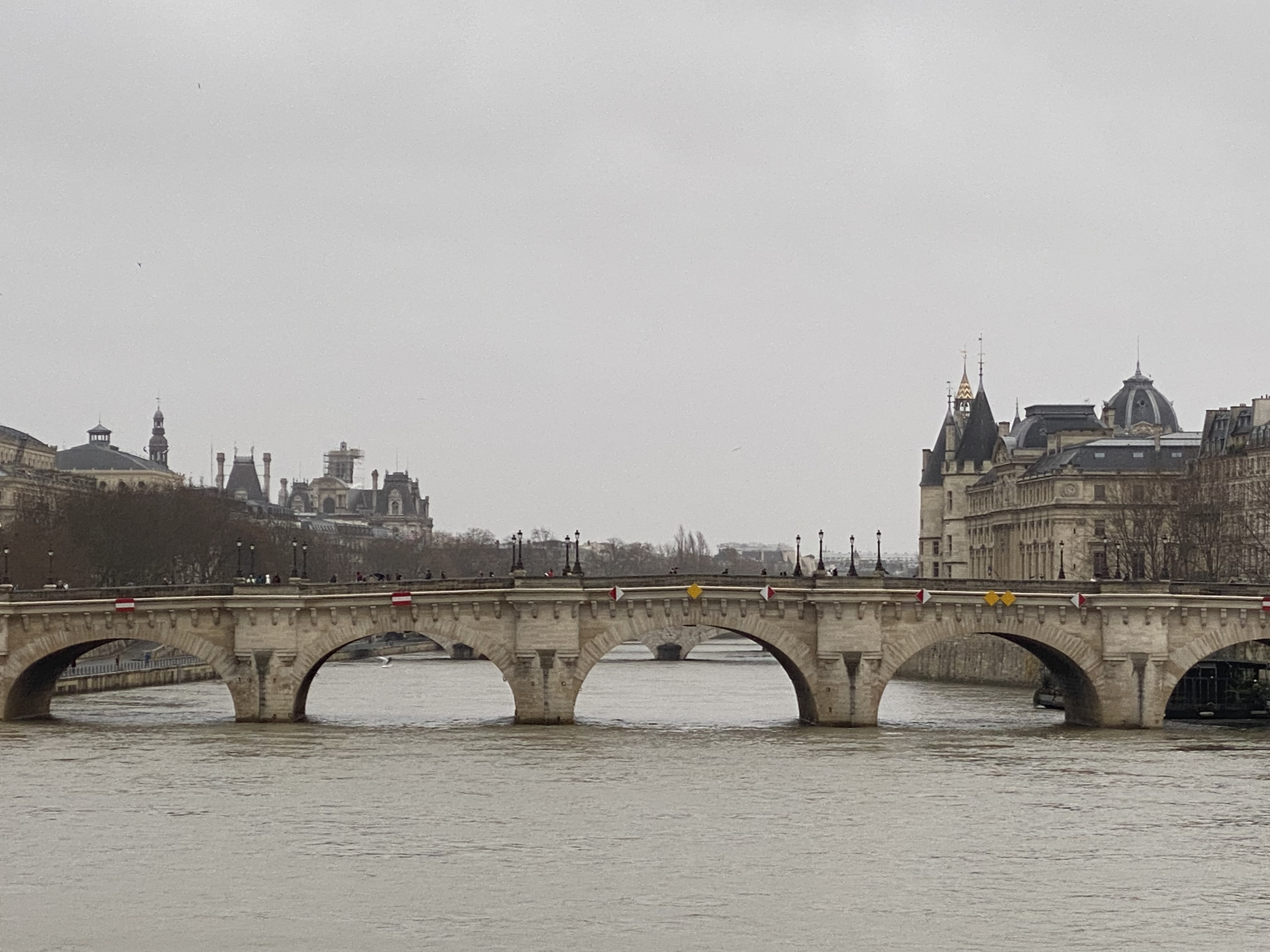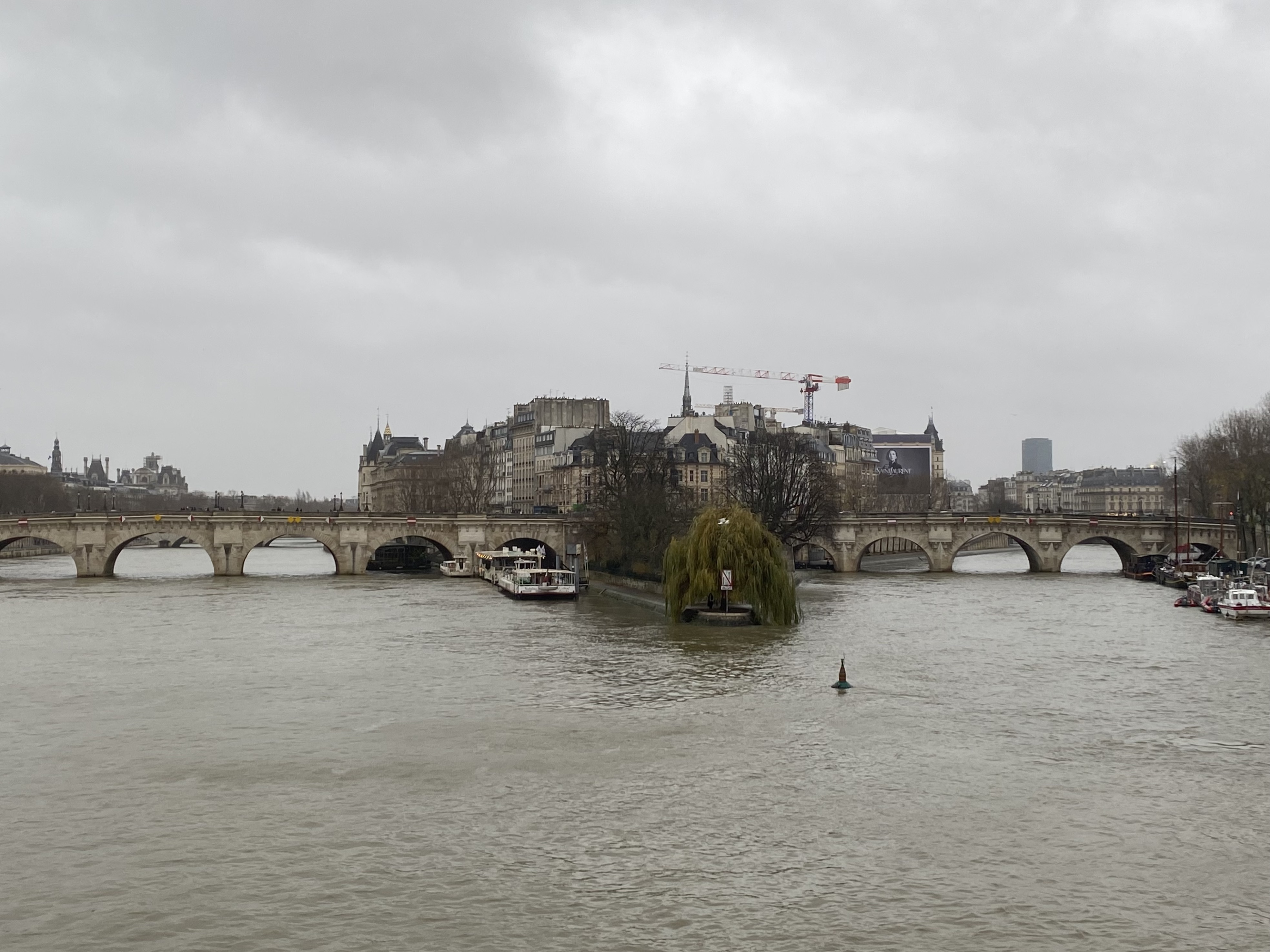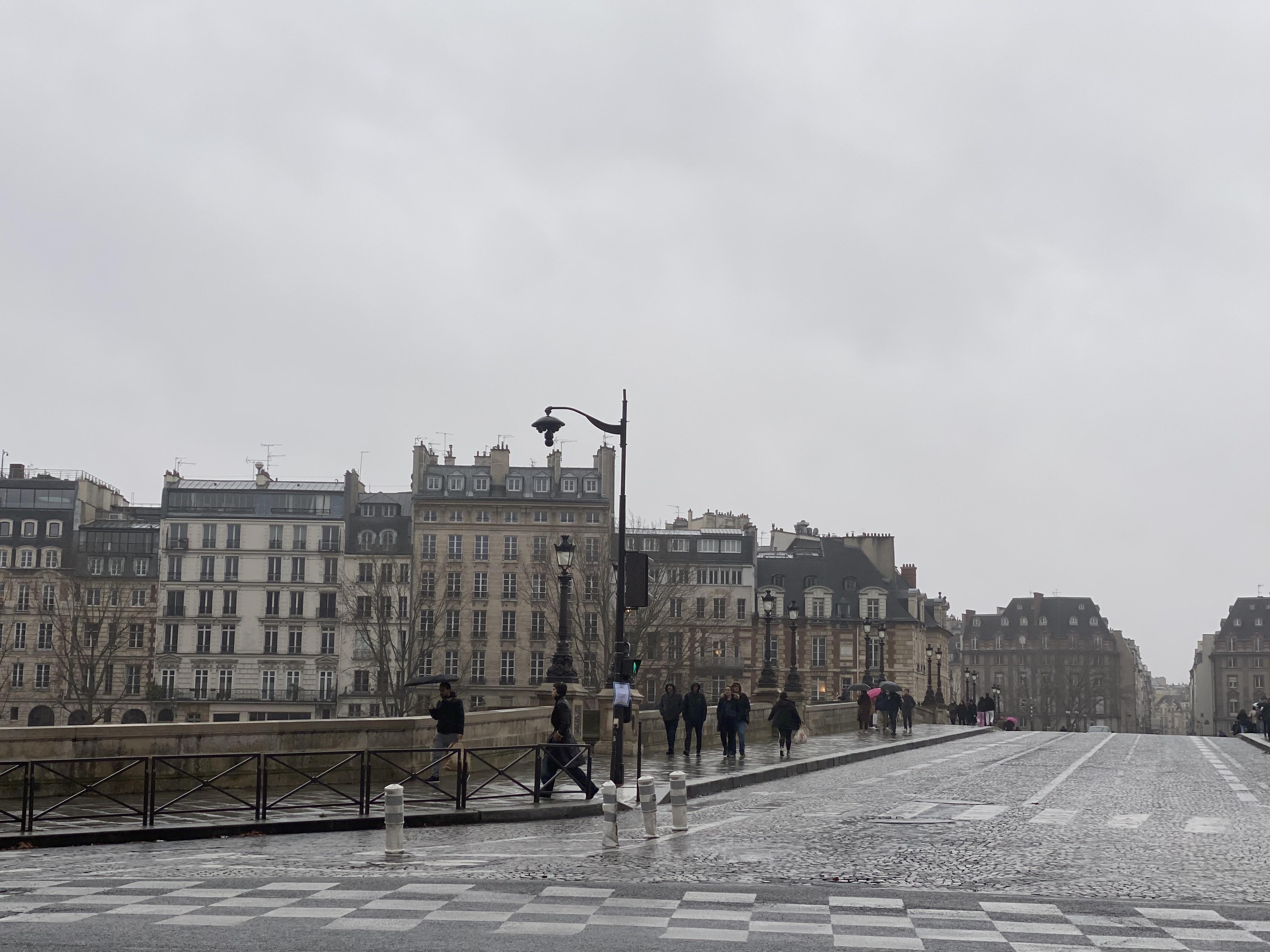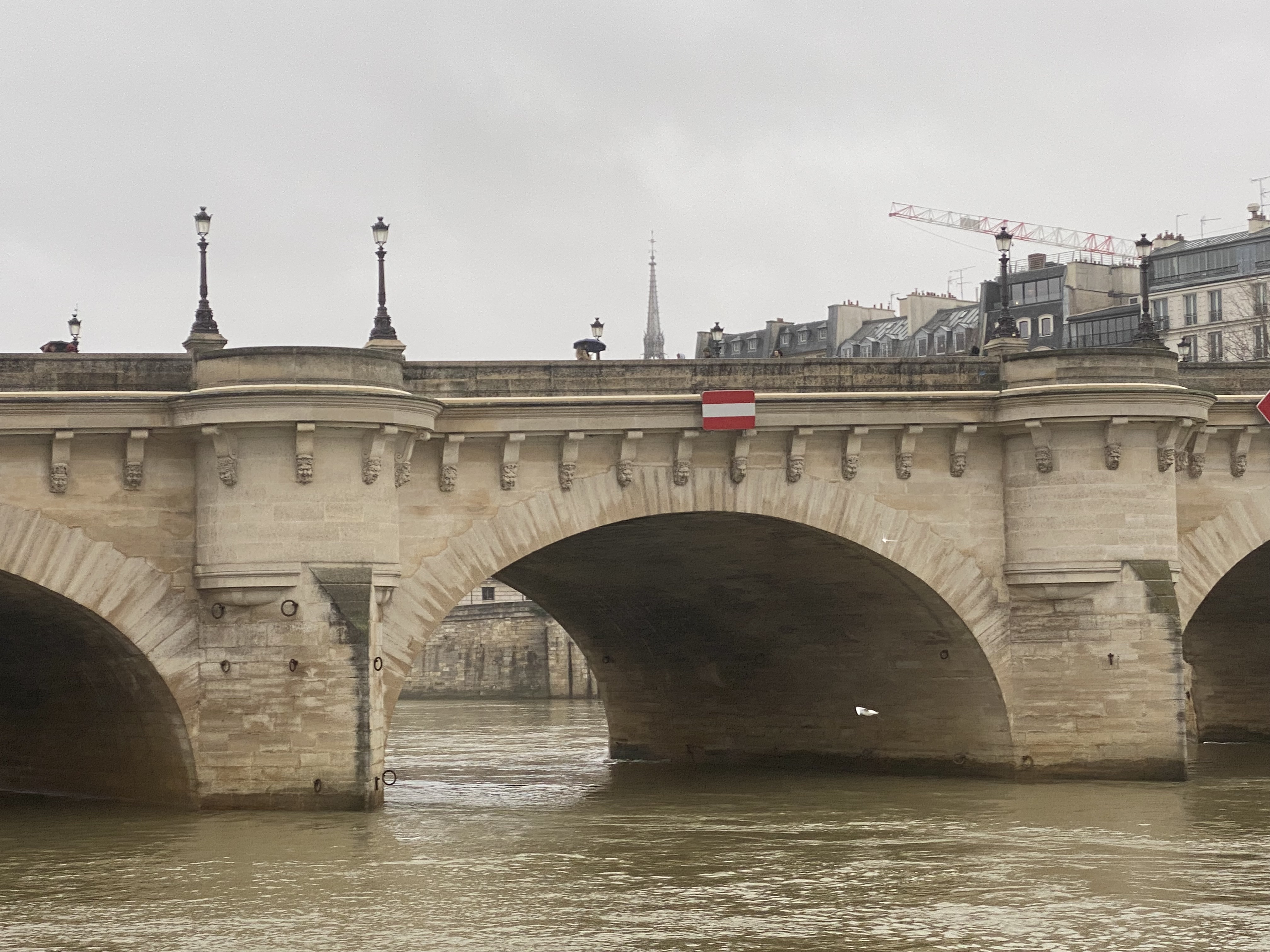Bridging Time on Pont Neuf

There is something of a paradox in the name of one of the most well-known bridges in Paris, Pont Neuf. Ironically, what in English would be translated as the “New Bridge” is in fact the oldest bridge in Paris, planned in the late 16th century by King Henri III and finished in the early 17th century by his son Henri IV (whose equestrian statue can still be seen in the middle of the bridge). This amusing contradiction isn’t just another humorous Parisian idiosyncrasy; it points directly to a story that possibly eludes both locals and foreigners.
Pont Neuf, with all its groundbreaking innovations, challenged all previous conventions and traditional standards for this kind of public infrastructure. It also marked the very beginning of a series of changes in the Parisian urban landscape, a real architectural transformation—unseen in Europe probably since Roman times—that would end up gaining the city the reputation that it enjoys today.

In her book How Paris Became Paris: The Invention of the Modern City, Joan Dejean speaks about how, in the 17th century, the role of the city’s main and most recognizable monument was played by the New Bridge, as the Eiffel Tower is today. Dejean goes as far as to state that, “The invention of Paris began with a bridge.” Naturally, this is an exaggeration. Paris was very much an important European capital much before the construction of the bridge. The city also had other bridges that crossed the Seine, and people’s ideas about city planning were definitely not changed overnight—especially by a bridge that took over thirty years to build.
Pont Neuf was only the fifth bridge in Paris at the time, and the first new bridge in over a century. It was the first bridge that crossed the river in a single span; the first one to be built not out of wood, but stone, and therefore fireproof and meant to endure. It brought elevated sidewalks, at a time when paved streets were more of a rarity than a ubiquity. It was the first major bridge with no houses lining its sides, which allowed for the bridge’s balconies. These balconies are perhaps the most groundbreaking feature, as it allowed people to admire their river in a way they had never been able to: walking over it.

At the time of Pont Neuf's construction, Paris was much unlike how we imagine it today. The city’s docks weren’t built, streets were not paved, the city had no big avenues or boulevards, no big spaces or squares meant for the public. Pont Neuf may not appear as fascinating when viewed through contemporary eyes, but it was strikingly different from anything that had come before it in the West since Roman times. It helped bring the Right Bank fully into the city, and it marked the beginning of a never-ending story of urban transformations in the city. By the end of the seventeenth century, Henry IV’s son, Louis XIII, and grandson Louis XIV (the Sun King), had built icons like the Place Royal (now Place des Vosges) and the Champs-Elysées, the first boulevards. Century after century, up until today, city planning in Paris gained more and more importance and, in turn, led to the city that we know and love today. Arguably, its oldest-newest bridge marked the beginning of this transformation.

Learning about the history of Paris is a fascinating undertaking because so much of its cultural richness can be traced a long way back in history. Walking along Pont Neuf now, one cannot help but feel embraced by a grandiose sensation of connection to the past. Imagine generations upon generations of people, coming to talk, to walk, to sell and buy, to plot and to create; how we are a part of that very history. It may be because, contrary to streets or roads on land, bridges haven’t been there forever. Nature did not put them there, humans did. It is mesmerizing to reflect on four hundred years of Parisians crossing it, and how we are all part of that story now.





